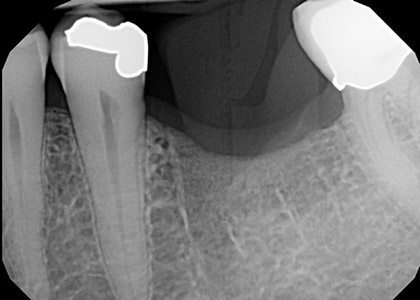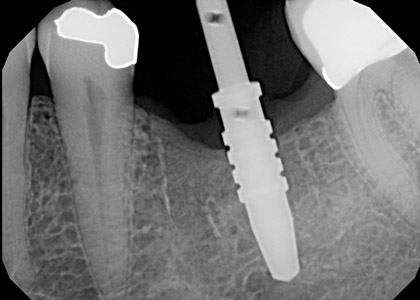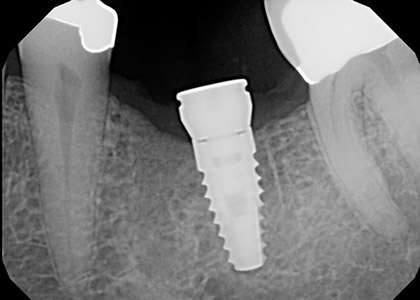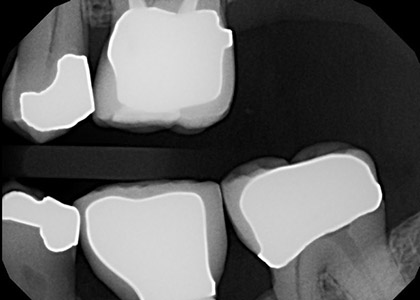The Simple Single Implant
What Patients Crave and Dentists Ignore
Why do general dentists have a complex about placing implants?
We do incredibly intricate and invasive procedures every day, yet most U.S. dentists are scared to death of placing a single implant. In Europe, general dentists place roughly 90% of the implants compared to 10% from specialists. Korean dentists place more implants per capita than any other country in the world.
In America, those statistics are completely reversed. U.S. specialists place roughly 90% of the implants annually and general dentists place fewer than 10%. Why is that? Is it fear, lack of training, costs, the unknown?
The answer is yes to all of these, but the main reason is fear. Fear of the unknown. Fear of surgery. Fear of rendering a patient numb for the rest of their life. Fear of litigation. Fear of what our local specialists will think about us if we start placing implants. The reality is that we deal with fear on a daily basis. It is a good and healthy thing to be fearful. It is what creates caution and drives us to do good work for our patients.
Alternatively, the curse of fear can also lead to paralysis and the concern that we are overstepping our bounds. This is exactly why more U.S. dentists don’t place implants and there are still millions and millions of people missing teeth.
Fear gives us something to conquer and who doesn’t want to conquer something? This is exactly how my journey into implantology started over 15 years ago. After looking at great implant sites all day every day and referring out every single case because of fear, I decided to become an implant dentist. It started with good, solid training. I took an extensive implant externship course at the Misch Institute and started to place simple dental implants in sites that had abundant bone. Not “no brainers,” but sites that any dentist should be able to restore competently with a very high degree of success and safety.
Fast forward 10 years. Now, I am an Associate Fellow with the AAID. I do my own implant placements, restorations, ridge grafting, sinus grafting, fully edentulous cases, and teach an implant course. My long-term success rate of 97% shows that my previous fear was legitimate, yet completely unfounded. Rarely do my patients have bad complications but, when they do, I know how to take very good care of the situation and get them fixed. My training and study prepared me for these situations and my team knows what to do when things go south. All of my local colleagues see what I do and how well I take care of my patients and because of this, no other dentists I know think I’m overstepping my bounds. In actuality, they’re impressed with my results.
I am no longer afraid of placing implants and you shouldn’t be, either! My patients are ecstatic that they can get complete implant care from start to finish right here in my office, not in another unfamiliar office in a different location. Their home dental office is the place they want to stay because they trust us and know that we will take good care of them from start to finish. How many potential implant patients never take the first step because they get cold feet, sticker shock, or just don’t want to go somewhere else? This is the barrier that we in America must overcome so that our patients can have better access to the best implant dentistry the world has to offer.
According to the American College of Prosthodontists, there are over 2.3 million single implant- supported crowns made annually, yet fewer than 12% of GP’s routinely do implant surgery. That fact alone illustrates the lack of implant providers and the bottleneck that is presently occurring in the U.S implant marketplace. Think endo. Most dentists begin to learn endo on single canal cases, not upper molars. Even after extensive training and experience, most dentists still treat the easier cases and refer out the more complex ones. Learning is a continuous progression, not an instantaneous, all encompassing event. By mastering only the easiest, least risky cases first, any dentist can overcome the fears associated with learning good, solid implantology treatments.
The Beginner’s Implant Case
Obviously, new implant dentists should begin their clinical implant education by choosing more straightforward or simple cases. For example, this patient has been missing tooth #19 for several years. The site has abundant bone height and width, a perfect site for a successful implant. CBCT show that there is 14 mm from the crest of the ridge to the IAN and 8 mm B-L ridge with plenty of room for a 10mm implant. This is a very straight forward case, similar to cases we all see every day. It’s one that a properly trained general dentist can do competently, confidently, and consistently.




Simple. Straightforward. Easier, faster, and 10 times more profitable than doing MOD composites any day. And guess what, in 3 months, you get to do the abutment and crown (more production!). This patient has an excellent chance of this implant lasting for many, many years, or possibly their entire life. Imagine how many of these patients you have in your office right now. The numbers are truly astounding!
Don’t sit back and wonder if you can do this. You can, and you should. I was just like you, wanting to place implants but afraid to do so. Get past your fears! Conquer it and your practice (and your patients) will be better for it in the long run!

